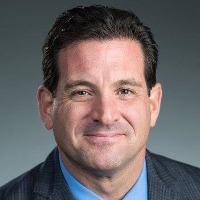Health insurance is a big deal. About 50% of employees say that health insurance is the main reason they stick around at their job, and 45% say it’s a top factor when deciding whether to take a job in the first place. If that’s not enough, there’s also a pretty solid financial incentive for business owners to offer health benefits—studies show that employer-sponsored health insurance brings an average of a 47% return on investment. Despite all this, only about half of small businesses actually offer health insurance.
For CPA practices, in particular, offering health benefits can be critical. The sedentary nature of accounting work, often involving long hours at a desk, poses risks, contributing to higher instances of health issues such as heart disease, diabetes, and poor posture. By providing comprehensive health insurance alongside other wellness-related benefits, you not only attract and retain top talent but also help protect the long-term health of your team, reducing absenteeism and improving productivity. (For more on the health challenges CPAs face, check out this article).
However, providing health insurance alone can still leave gaps in comprehensive coverage, and this is where specialized accounts come in. Beyond traditional insurance, offering tax-advantaged accounts can enhance your benefits package by giving employees more flexibility to manage their healthcare costs while also providing significant tax savings for your business.
In this article, we’ll talk about how to build a flexible health benefits package that gives employees options, keeps costs manageable, and works well for everyone involved.
Setting Up a Flexible Health Benefits Package for Your Practice
To keep things simple and give employees a choice that matches their needs, you can offer two main types of plans:
A High-Deductible Health Plan (HDHP) that can be paired with a Health Savings Account (HSA).
A Standard Low-Deductible Health Plan that can be paired with a Health Reimbursement Arrangement (HRA).
This setup gives your employees flexibility—some might prefer saving on premiums and building a health savings account, while others might lean toward a plan with lower out-of-pocket costs and the extra support of an HRA.
Health Savings Accounts (HSAs)
An HSA is a tax-advantaged account that employees (and you, as the practice owner) can use to save for qualified medical expenses. It’s only available if you offer a high-deductible health plan (HDHP). Here’s why it could be a great option for your practice:
- Tax Benefits: Contributions go in pre-tax, the money grows tax-free, and withdrawals for medical expenses aren’t taxed. That’s a pretty good deal, and it makes the HSA one of the most tax-efficient accounts out there.
- Employer Contributions: You can contribute to your employees’ HSAs to help them build up their accounts. Plus, it’s tax-deductible for the practice.
- Long-Term Value: HSAs are portable, which means the account stays with the employee even if they leave your practice. They can also use the funds in retirement, making it more of a long-term investment for employees who like to think ahead.
So, who’s this best for? Typically, younger, healthier employees who don’t need a ton of medical care are the ones who like HDHPs paired with HSAs. They get lower monthly premiums, and the ability to save for future healthcare needs tax-free.
Health Reimbursement Arrangements (HRAs)
An HRA is different. It’s an employer-funded account that reimburses employees for out-of-pocket medical expenses and insurance premiums. You control how much goes into the HRA, and it’s all tax-deductible for the practice. There are several types of HRAs available, such as QSEHRA (for small businesses) and ICHRA. When you decide to offer an HRA, you can expect the following benefits:
- Flexibility: HRAs don’t require an HDHP, so you can pair them with a standard low-deductible health plan. This means employees who don’t want to deal with high out-of-pocket costs can still get the coverage they want, with some extra support from the practice.
- Employer Control: As the practice owner, you decide how much to contribute and set reimbursement limits as long as they align with IRS rules.
- Support for Medical Costs: Employees can use HRA funds to cover things like copays, deductibles, prescriptions, and other healthcare services that might not be fully covered by insurance.
HRAs are great for employees who prefer a low-deductible plan and want that extra peace of mind, knowing they won’t have to dig into their own pockets too much for healthcare expenses. They’re also especially helpful for those managing chronic conditions or who have regular medical needs.
Payroll Tax Savings and FICA Exemptions
When employees contribute to HSAs using pre-tax dollars through a Section 125 Cafeteria Plan, it reduces their taxable income, which also lowers the amount you owe in FICA taxes (Social Security and Medicare taxes). Additionally, any employer contributions you make to HSAs are also exempt from FICA taxes.
HRAs are fully employer-funded, and while contributions are exempt from FICA, they do not directly reduce your payroll tax liability in the same way as pre-tax employee contributions to HSAs do. However, you still benefit from offering these plans because the employer contributions made to HRAs are tax-deductible and are also exempt from federal income tax for the employee. Depending on your state’s rules regarding employer health benefits, HSA and HRA contributions may also reduce your state tax liability.
| Feature | HSA (Health Savings Account) | HRA (Health Reimbursement Arrangement) |
|---|---|---|
| Eligibility | Requires enrollment in a High-Deductible Health Plan (HDHP) | No specific health plan requirement; can be paired with various types of health plans |
| Account Ownership | Owned by the employee and portable if they leave the company | Owned by the employer; funds are not portable if the employee leaves |
| Tax Advantages | Triple tax advantage: contributions are tax-deductible, grow tax-free, and withdrawals for qualified expenses are tax-free | Employer contributions are tax-deductible; employees don’t pay taxes on reimbursements |
| Contribution Limits (2024) | $4,150 for individuals, $8,300 for families; additional $1,000 catch-up contribution for those aged 55+ |
Depends on the type of HRA: - QSEHRA: $6,150 for individuals, $12,450 for families. - EBHRA: $2,100 per employee. - ICHRA: No set federal limits; defined by employer. |
| Investment Options | Funds can be invested, similar to a retirement account, for long-term growth | Not an investment account; funds are for reimbursement only |
| Flexibility | Employee decides how much to contribute and when to use the funds | Employer controls contribution amount and eligible expenses for reimbursement |
| Usage Restrictions | Funds must be used for qualified medical expenses; penalties apply for non-qualified withdrawals before age 65 | Funds are only available for eligible expenses as defined by the employer |
Putting Together the Optimal Benefits Package for Your Practice
Get to Know Your Team’s Needs
Look at the demographics of your workforce. Are they mostly younger professionals? Do they have families? Are there employees approaching retirement? Understanding this will help you decide what mix of plans to offer. For example, a younger team member who rarely gets ill and who would rather save for long-term medical costs in retirement might appreciate the HDHP/HSA combo, while employees who often get ill or who have a chronic condition might prefer a low-deductible plan with an HRA.
Set Up Employer Contributions
Decide how much your practice can contribute to each option. For the HSA, you could offer a set annual amount or match employee contributions to encourage savings. For the HRA, you’ll set limits based on what works for your budget but still provide support for those choosing the low-deductible plan. The key is to make sure the contributions are generous enough to make the benefits attractive but manageable for the practice’s finances.
In Conclusion
Health benefits are a powerful tool for attracting and retaining talent, leading to lower turnover rates and reduced costs for hiring and training new employees. Plus, they come with solid financial perks for CPA practice owners. By offering options like an HSA paired with an HDHP or a low-deductible plan paired with an HRA, you can build a benefits package that factors the needs of your workforce, your practice’s tax plan, and your own health and retirement needs.
If you’re ready to take your benefits package up a notch, start by assessing your team’s needs and determining the best options for your practice’s budget. And don’t hesitate to get professional advice when needed—ensuring your benefits plan aligns with your own retirement goals is worth the time and effort.











